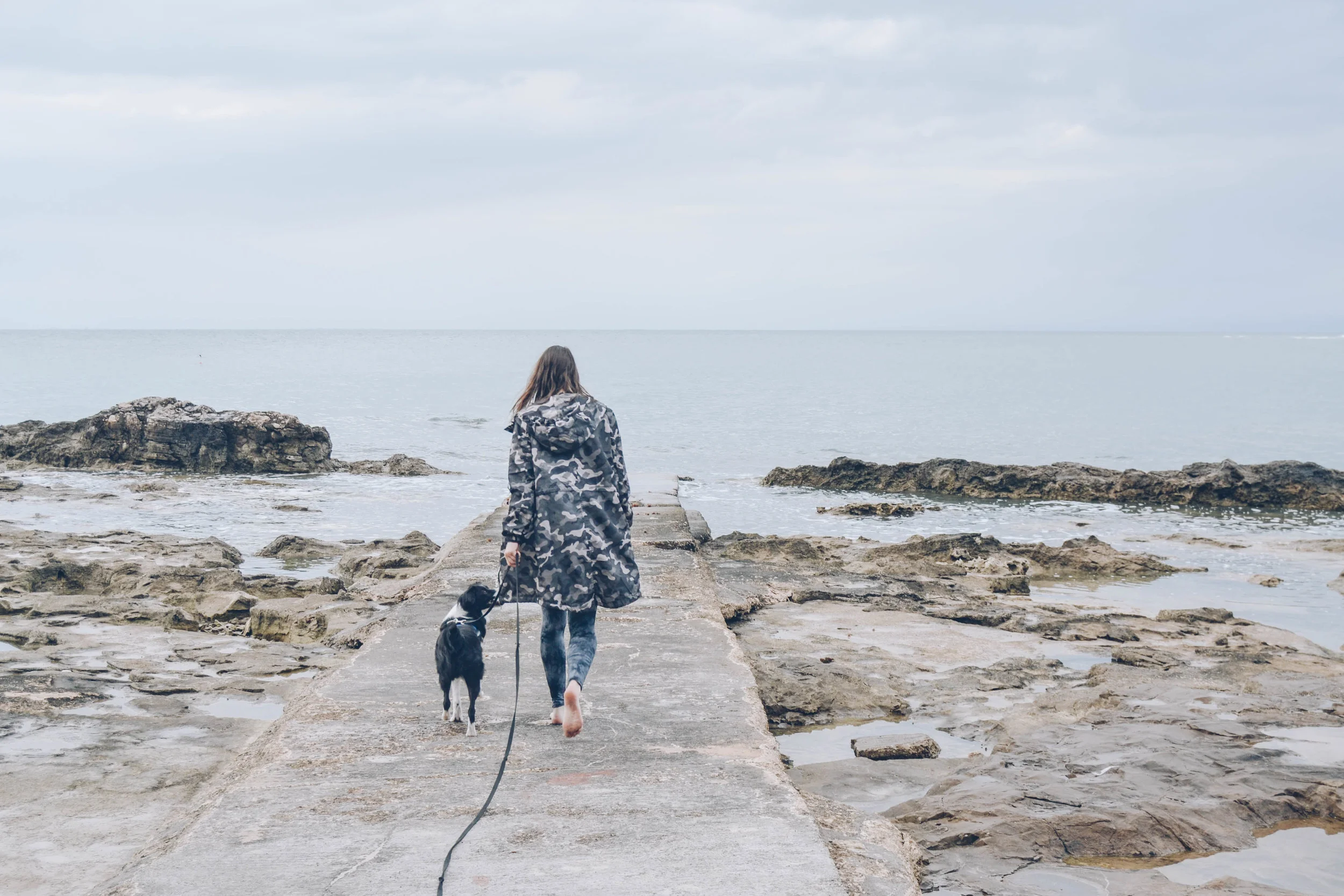3 Things That Might Be Undermining Your Dog's Training Process
/We all make mistakes; that’s a fact. Nobody is perfect and as a passionate perfectionist I can tell you that striving for pure perfection has only gotten me in trouble in my life. So I’ll say it again, for those sitting in the back of the classroom: We all make mistakes.
When your mistakes set-back your dog’s training or rehabilitation process, that’s when we tend to be super hard on ourselves. Understandably so - this little four legged creature is totally dependent on us and here we are, screwing up! The one thing I’ve learned through some painful lessons of my own is that life happens to all of us. A lot of the things are completely out of our control and on most days we truly do the best we can, with what we’ve been given. I understand that it gets really hard some days and guess what? Your force-free training doesn’t have to be perfect. Before you crucify me for this statement, I think even the most famous positive reinforcement trainers with decades of experiences make mistakes sometimes. You either underestimate the situation, overestimate the dog or just break under the pressure of your own nervousness. It just happens.
To me, the point of positive reinforcement is to always strive to be better. Progress is better than perfection.
Learning from your mistakes is better than pretending you are not responsible for them and blaming the dog for his “bad behaviors.” Exploring your own patterns of thinking is better than giving up on a training system altogether because it seems like “too much work.” You don’t have to always be perfect, but you do always have to strive to be better - that’s what it’s all about.
Let’s look at some of the unexpected things that might be undermining your force-free training and how you can work through them to be a better dog parent, especially if your furry child has a serious case of PTSD.
1. Your Own Upbringing
How you were raised impacts a lot of things in your life and the way you choose to raise your dogs could be one of them too. Every person is different because every person comes from a unique environment and has a unique story. I don’t know your story - but you do! I encourage you to look into it and see if you can draw some parallels or contradictions between your own childhood and how you are now communicating with your dog. Are you trying to be the ultimate boss? Are you afraid your dog is going to experience discomfort, so you don’t want to set boundaries?
Personally, I was raised by two people who were polar opposites. One was completely authoritarian and repressive, while the other one was fully permissive. Between these two concepts, I was hella confused. I was either feeling trapped and afraid or I was trying to cope with all the freedom I was given. When I adopted Bailey, I knew I would never ever use force to raise her because by then I had learned on my own skin that it doesn’t work. So I went to the other side of the continuum: the lack of rules and boundaries. At the time, it was the only other thing I knew, so it made sense to me. I started to deal with her fears by coddling her, pushing her in interactions with dogs and humans because “she needs to socialize” and leaving her totally without protection in those interactions because I fully believed I was giving her “freedom.” I felt so very sorry for her because of the hundred phobias she had, but I did nothing of value to actually help her. My poor little baby she was, until I finally lost my shit every couple of months and yelled at her out of frustration because of her constant barking. Even the most patient humans can break under the weight of their dog being hysterical 24/7. I feel bad about it today, of course, but I want to mention it nonetheless because I’m trying to break the myth that people are either bad dog owners or perfect dog owners.
Our first year wasn’t all bad, mind you, there was so so so much good in it ... but as far as her reactivity goes, we were lost. The whole time I knew that while I may not be using force to raise her, something was definitely still wrong.
Slowly but surely I started to understand that too much “freedom” isn’t always a good thing either. I started understanding that boundaries don’t have to mean repression - they can mean a safe harbor. Protection. Giving your dog a feeling of safety, showing them that you will always make sure all is well. Once that clicked in my head and I found this middle ground, things improved for us so much. Bailey started to trust me like never before. She knew that I am going to make sure she is safe, as well as guide her rehabilitation in a very slow manner. If she ever felt overwhelmed it was my job to give her space, remove her from situation etc. We finally found balance.
2. Blindly Trusting a Training Philosophy
I don’t believe in blindly trusting any doctrine. I don’t believe in either side of the aforementioned continuum. I believe you should always strive to acquire more knowledge, follow what the experts say (not self-proclaimed experts but actual scientists), ask many questions and at the end of the day, think with your own head.
All dogs are different. What may work on one of them is not going to work on the other one. I believe in force-free training because I believe fear and intimidation should not have a place in any relationship! But within force-free training there are many roads you can go down and if choose to do so with a blindfold over your eyes, refusing to learn about other paths, it may set-back your training.
Some people never use the word “no” when training their dogs. Some don’t want to use treats and go for toys instead. Some feed their dogs from a bowl while others use mental enrichment as part of the feeding routine. Some don’t believe in the game of fetch, some don’t like it if the dogs jump at Frisbee, some believe dogs should never be on a leash, others believe they should always be on a leash. Some socialize their dog by putting him in a pile of puppies, other socialize their dog by hand picking canine interactions. Different owners, different dogs ... different approaches.
Whatever your version of positive reinforcement looks like, it’s still better than using shock collars.
Maybe you find out that some of the techniques you’ve tried haven’t been working for you - that’s awesome! You can dive into exploring others and see what works for you in the end. Always be open to learning new things, always!
Positive reinforcement is a journey. It’s an ocean that is hardly ever smooth. It tests our patience and trust. We’ll make mistakes because we aren’t perfect. You’ll lose your temper or re-traumatize your dog or hype up your dog instead of calming him down. Hey, it happens. Do not give up!
“A smooth sea has never made a skillful sailor.”
3. Forgetting That It Takes Time - A Lot of It
Most people give up on positive reinforcement because it takes time and dedication - something they are not prepared to invest in their own dog. Please don’t be one of those people. I can’t tell you how many times I’ve heard: “Well we’ve tried with food but it didn’t work. The choke collar is the only way to keep him under control.” Needless to say, my heart breaks every time.
How hard did you try?
How long did you stick with it? A week? A month?
Did you have a system in place?
Were you consistent?
Did you get professional help?
Did you set your dog up for success?
Did you create a pleasant training environment for both of you?
Answer these questions every time when you want to give up or resort to an aversive.
Yes, maybe your walks are going to be far from perfect for the next three months. Maybe your dog is still going to bark at everything that moves for the next six months, before you even start noticing progress. Maybe you’ll be a little more tired. Maybe your environment will not understand and you will feel a lot of social pressure.
I can tell you with a certainty, it is not going to be perfect - but it’s going to be kind to your dog and that’s what makes it worth it!
Stick with it, stay patient and trust in yourself and your dog. The results will pay off. Nothing forms a stronger bond than raising your dog with love and compassion. That does not mean the lack of boundaries, the lack of a system, a total anarchy. It means that you are guiding your dog towards being a happier, more confident pooch. It means you reflect on your own patterns of upbringing and see what’s undermining you. It means you are always looking for more knowledge, reading books, attending seminars, talking to experts. It means that you recognize it takes time. And above all, it means dedicate yourself to growing as a person, too.
Putting a shock/choke/prong collar on your dog will not solve their problems - it will only solve yours. That is awfully unfair. Success is not linear and force-free training is not always going to be perfect; but it’s always going to be worth it. <3
Share the wisdom on Pinterest!





